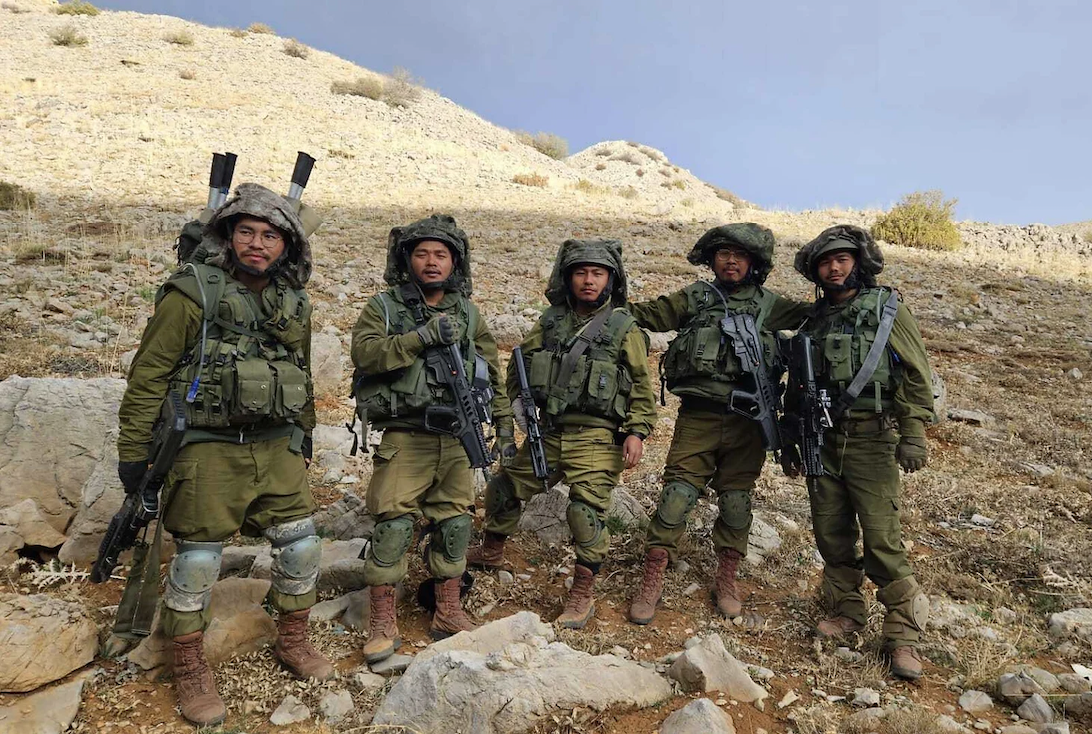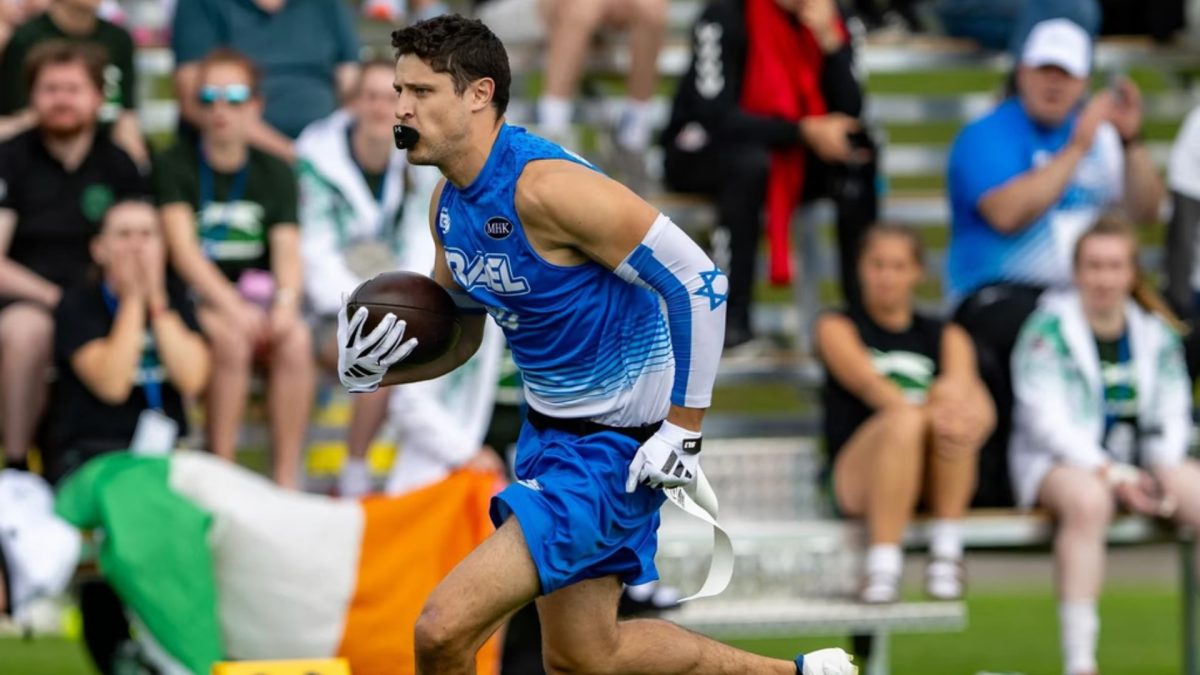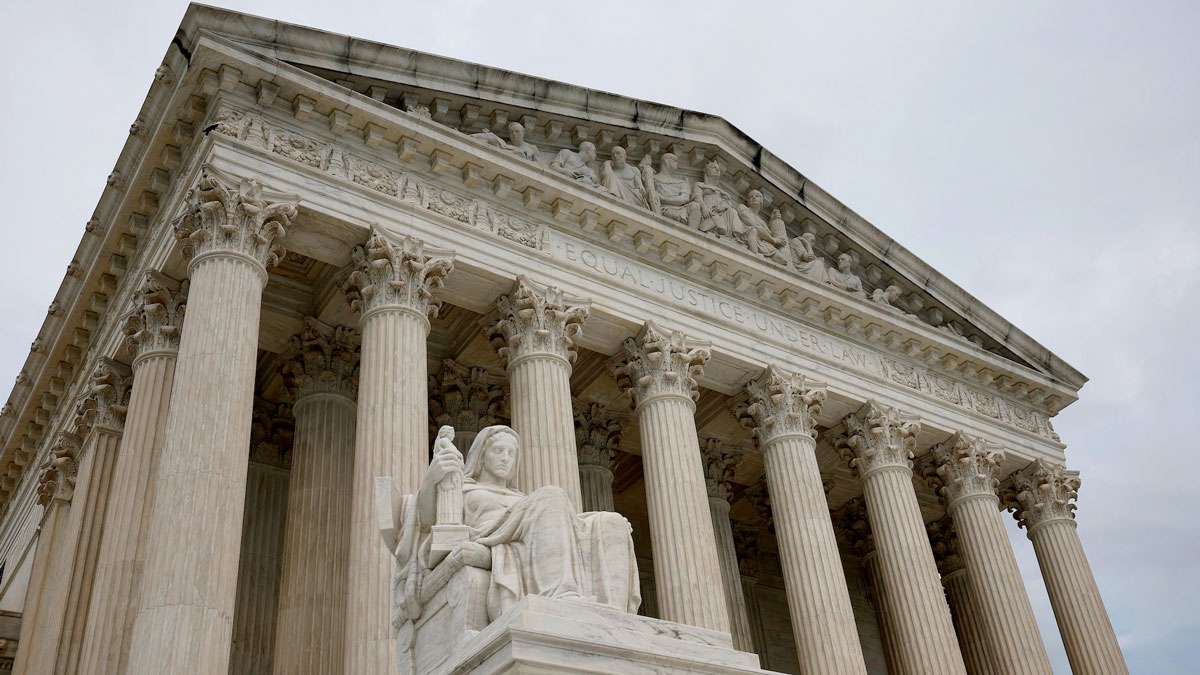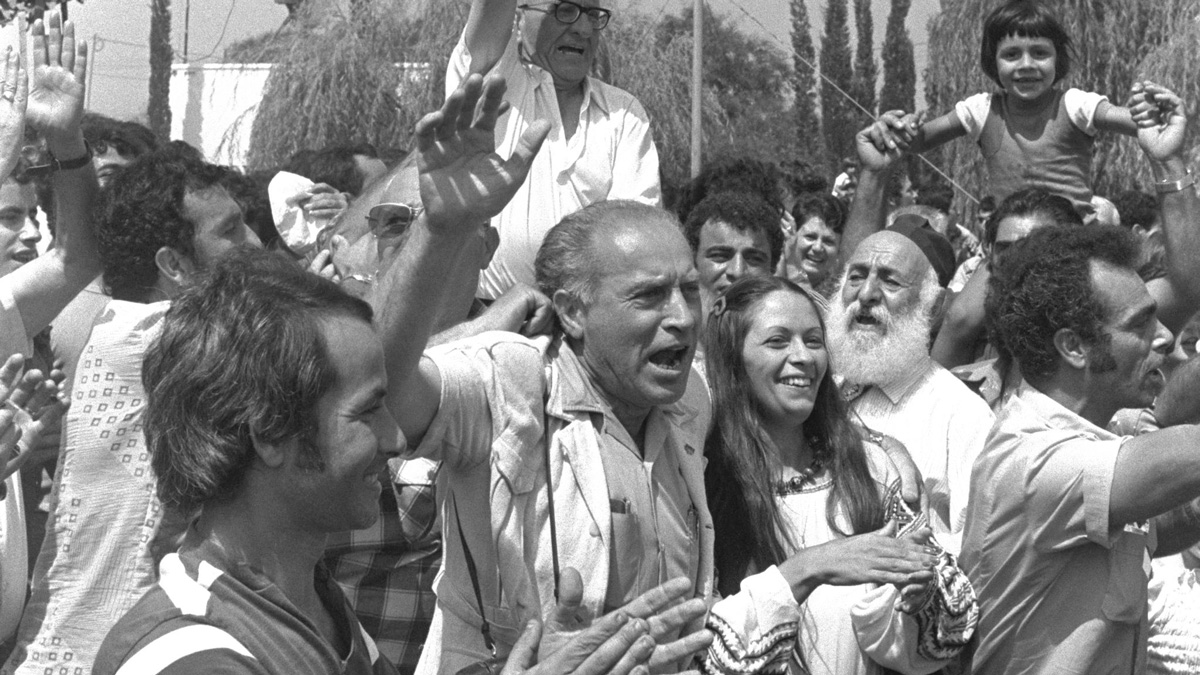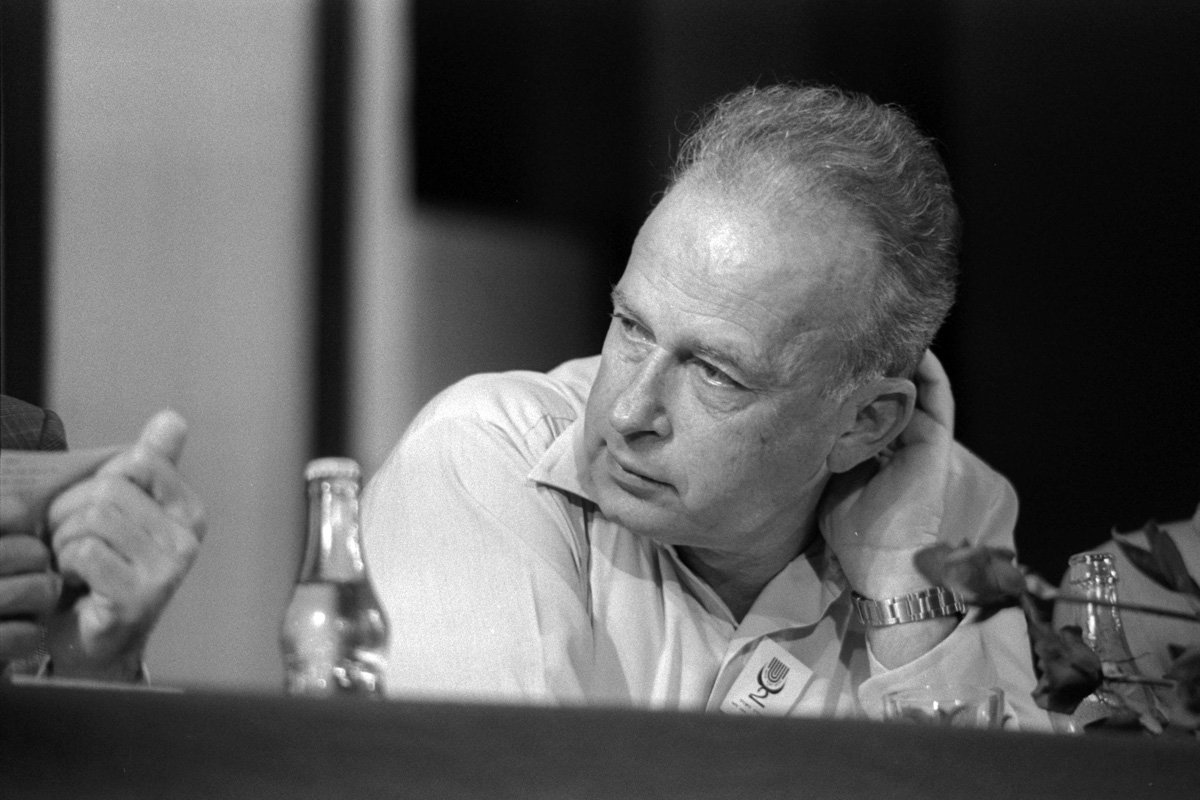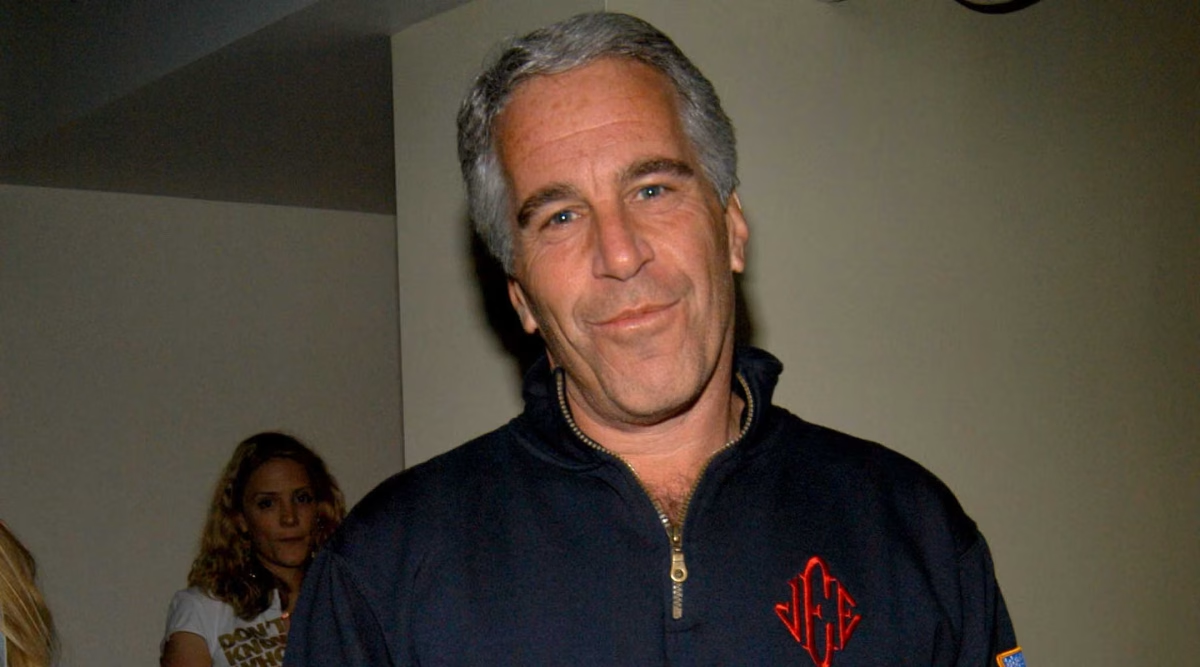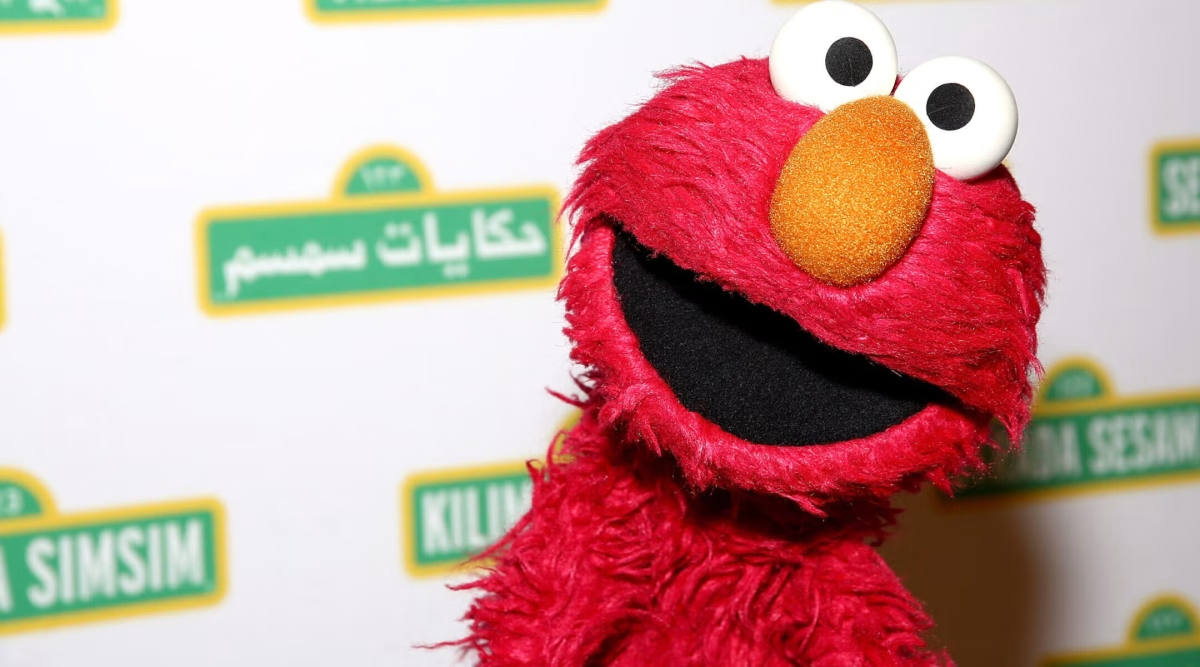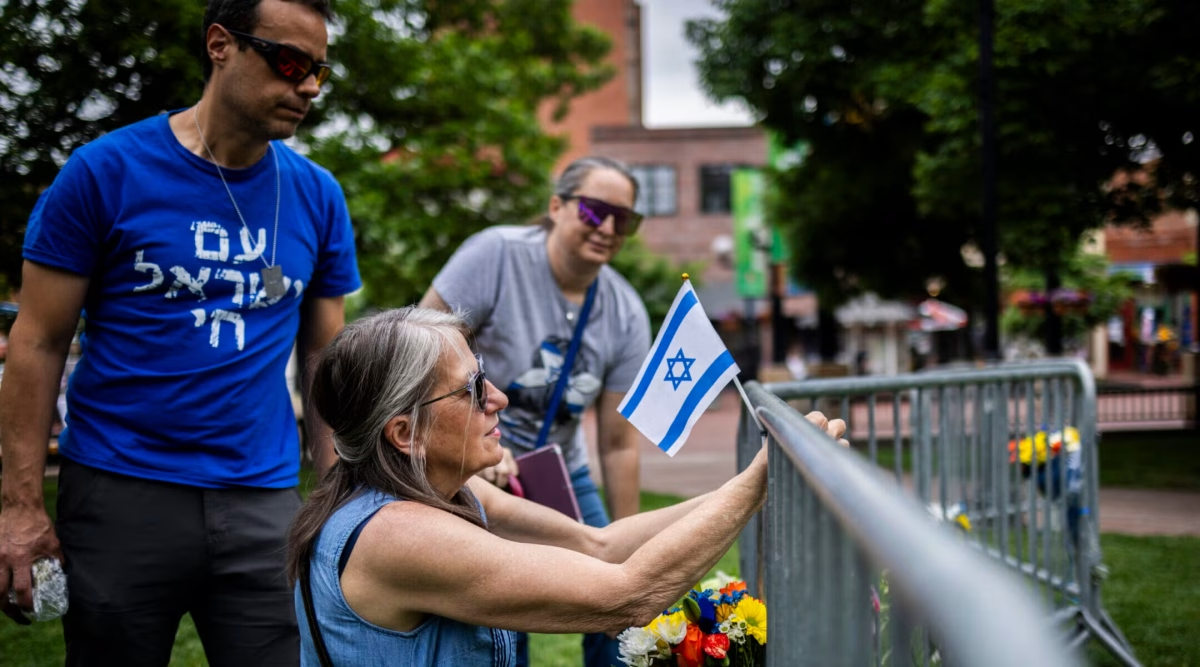(JTA) — In the 2000s, as the small Israeli town of Sderot endured heavy rocket fire, thousands of residents left the city. Around the same time, a new population began moving in: Bnei Menashe Jews from the northeast Indian states of Manipur and Mizoram.
More than 100 Bnei Menashe families called Sderot their home until Oct. 7. The community was deeply proud of what it created: the first synagogue and beit midrash — or Torah study hall — run exclusively by Bnei Menashe Jews. It was a dream, for many, that began halfway across the world in India.
The dream was interrupted when Hamas terrorists infiltrated many towns and kibbutzes surrounding Gaza. By the end of Oct. 7, 50 civilians in Sderot had been killed, as well as 20 police officers, according to the Times of Israel.
But none of them were Bnei Menashe Jews.
That day, about 40 people gathered at a new synagogue building given to the community by Sderot’s mayor, Alon Davidi, only a few weeks before. Rabbi David Lhungdim recalled feeling rushed by Davidi to begin high holiday services there long before the community felt ready to make the move.
But in the end, the building saved them. The new synagogue, Alfei Menashe, is located to the east of Menachem Begin Road. While Hamas terrorists patrolled that road on Oct. 7, shooting people in the street, in their cars and in their homes, the Bnei Menashe prayed.
“I told them, let’s finish our morning prayer, we have no choice,” Lhundgim said.
After the attacks, “I questioned myself, why was the mayor in a state of hurry? When it was Simchat Torah, everything was clear,” Lhungdim said. “I said, wow, this is a miracle that God gave us … Had we been praying at the old site [a caravan on Natan Elbaz Road, which does not have a bomb shelter], the terrorists would have seen us because they were on the main road and shooting everyone that they see. But because the mayor gave us the new site, we don’t need to cross the main road.”
Rivka Guite, Lhungdim’s sister, and her husband Zevulun had been visiting Guite’s mother for the holiday. Their home, located near the old synagogue where Hamas had been active, was destroyed in a Hamas rocket attack. Nothing could be salvaged from the rubble, Guite said.
But Guite is just thankful to be alive and living in Israel.
“It’s a miracle indeed. I really do not have an explanation for these things,” Guite said through a translation provided by Isaac Thangjom, project director at the Israel-based nonprofit Degel Menashe. “How many of us would have died if the old synagogue had been used?”
Now, most of the Bnei Menashe community in Sderot has been evacuated to Jerusalem and the Dead Sea, where they are waiting out the war in refugee hotels. An estimated 200 young Bnei Menashe men have joined the Israeli military’s war effort, Thangjom told JTA. One soldier, Natanel Touthang, was injured by a rocket while on duty at the northern border.
“When I went to the reserves without being called up,” Touthang said, “I did it for my family. It sounds selfish, but I did it for my family.”
From Manipur to Sderot
The Bnei Menashe Jews are said to be descendants of the “lost tribe” of Manasseh, separated from their fellow Israelites after exile over two thousand years ago. They are part of the Kuki-Chin-Mizo ethnic groups that reside in northeastern India, western Myanmar, and southern Bangladesh.
Researchers say the group came to Judaism via Christian missionaries, who introduced them to the Bible in the late 19th century. Bnei Menashe tradition recalls the story of Met Chala, a Christian local tribal leader in Mizoram who was told by God in a dream to return his people to the land of Israel and their true religion: Judaism.
They began immigrating to Israel in the late 1980s with the help of Israeli Rabbi Eliyahu Avichail and his organization Amishav, undergoing formal conversions upon arrival. The immigration process was handed over to the Israeli nonprofit Shavei Israel in 2004, headed by Michael Freund, a former advisor to Benjamin Netanyahu.
Both Avichail and Shavei Israel have faced intense criticism and accusations of right-wing political motives from the Israeli left, as new Bnei Menashe immigrants moved to West Bank settlements upon arrival — particularly Kiryat Arba, which today hosts a community of about 700 Bnei Menashe Jews.
Shavei Israel halted that practice over a decade ago following the criticism, but some still move to settlements upon arrival to Israel to be with their families who already live there. Many have also settled in other towns within Israel’s pre-1967 borders.
Their settlement in the West Bank and on the border with Gaza has been less a product of political motivation than of convenience and accessibility, said Gideon Elazar, an anthropologist at Bar-Ilan University who researches the Bnei Menashe and other “lost tribes.”
“These were the communities that would accept them,” he said.
New Bnei Menashe immigrants have experienced difficulty learning Hebrew, finding profitable work and assimilating into Israeli society. Some experience discrimination and racism. Last year, Yoel Lhunghal, an 18-year-old Bnei Menashe Jew who had immigrated just a year earlier, was murdered in northern Israel. Though police found no evidence of a racial motive behind the attack, his father believes Yoel was “a victim of racism.”
The case of Lhungdim’s Sderot community is a slightly different story. The 120-family-strong community moved there on their own accord, Lhungdim said. Some came from other areas such as Carmel and Kiryat Arba — both towns where Lhungdim lived before coming to Sderot — and some directly upon arriving from India to join their families. Affordability was a major factor, as costs were lower due to Sderot’s location on the Gaza border. The area also offers work that corresponds with the Bnei Menashe community’s skills, such as fruit and vegetable packing.
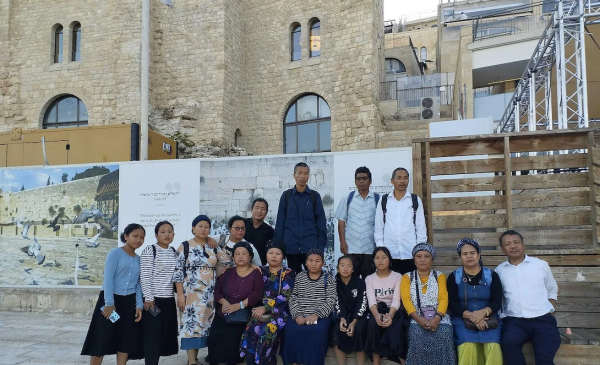
“We want to strengthen Israel, that’s why we go to live in Sderot. And I’m proud to be from Sderot,” Lhungdim told JTA. “As a convert Jew, I would have been ready to sacrifice my life to the Jewish nation.”
Like other Israelis in towns near Gaza who survived the Oct. 7 attacks, the entire Bnei Menashe community in Sderot was relocated to hotels in Jerusalem. The more than 100 families staying there have kept busy by continuing religious education, praying at the Western Wall and enjoying free admission to local museums. Many had never before enjoyed stays at four-star hotels or had the opportunity to spend much time exploring Jerusalem.
But they are still eager to get back to their hometown. Guite and other community members have been making day trips to the south to tend to vegetable fields that have been left abandoned since the evacuation.
“The government is doing so much for us, and of course, we are only too happy to contribute and give something to Israel in forms of service,” Guite said.
The other war in India
Bnei Menashe Jews are now facing war and displacement on two fronts: within Israel, and in Manipur, where an ethnic conflict has been raging for nearly eight months.
There, hundreds of Bnei Menashe Jews are rebuilding their lives in the midst of an ethnic conflict that began in May and has no end in sight. Human rights groups say the ethnic Kukis — the group to which the Bnei Menashe belong — have been targeted by the majority Meiteis in what some have called an “ethnic cleansing.” Many Kukis have been forced out of their local valley, which is now mostly occupied by the Meiteis, to the hills, which have become Kuki territory.
Others have moved to the neighboring Mizoram state, where other Bnei Menashe Jews live.
Unlike in Israel, the hundreds of displaced community members in northeast India have no hope of returning home, as new informal territorial borders based on ethnicity have become the norm. Many are living in newly-built houses with vegetable plots on a picturesque 200-acre piece of land donated by community leader Lalam Hangshing. It has been named “Moaz Tzur,” and Degel Menashe, which advocates for the community, proudly refers to it as India’s first kibbutz.
These Jews have dreamed of immigrating to Israel for more than two decades. Thangjom called the war a “setback” to the process and will lengthen the timeline before the next slate of immigration, but conversations with the government are continuing, he said.
The war in Israel also impacted the amount of aid that Degel Menashe has been able to provide to Bnei Menashe refugees in India, as international Jewish organizations pour money into Israel.
“Since the war started in Israel, I don’t know if I’ll be able to give the same amount of help. But we are approaching our donors,” Thangjom said.
—
The post Indian Bnei Menashe Jews miraculously survived Oct. 7. Now they’re fighting wars in Israel and India. appeared first on Jewish Telegraphic Agency.



